
scrounge: /skrounj/ informal verb: to actively seek [books] from any available source

I've read many Bible stories for children over the years. We grew up on Kenneth Taylor's The Bible in Pictures for Little Eyes and now we like Sally Lloyd-Jones's Jesus Storybook Bible. We've also read many picture books featuring individual stories -- some I liked, others were more generic, poorly illustrated, or tried too hard to make the story into something it didn't need to be. Still, I could list many good ones, but here are some I really like, some of which are by authors who are well known even outside the realm of religious literature.
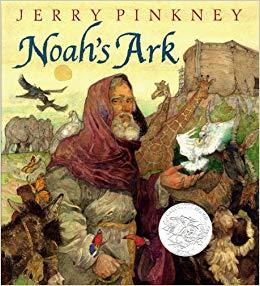
Jerry Pinkney is a Caldecott-winning artist who has illustrated many books for children, including a wordless version of The Lion and the Mouse. Here in Noah's Ark, Pinkney tells the simple story from the Bible without messing with the narrative -- but the attention to detail in his words and paintings capture the epic scope of this story, as well as the courage and sense of survival. (When it comes to this particular story, we also enjoy Peter Spier's wordless version of Noah's Ark.)
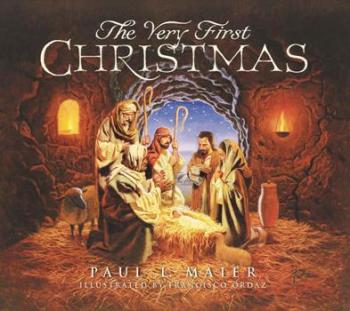
I enjoyed The Very First Christmas board book because it tells the story from a Christian perspective, and doesn't feel the need to embellish the narrative with speculation. The story is a bit choppy at first for this reason, but it relates Mary and Joseph's journey to Bethlehem, and the special visitors the baby Jesus received, paired with beautiful, reverent illustrations. See my full review of both versions of this book here.
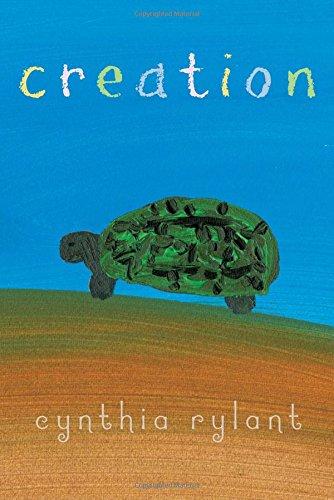
I was pleasantly surprised to see a Creation picture book from Cynthia Rylant at our library, since I didn't realize that she was an illustrator as well. The text here is right from the King James version of the Bible, which is probably more familiar to many people despite the archaic language -- it does have a certain poetic feel to it. The paintings are fairly simple, with broad brush strokes and few details, but I think it works well and helps to capture the simplicity and repetitive nature of the text.
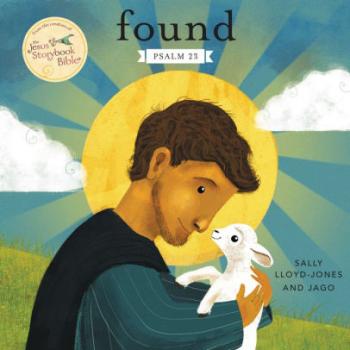
When I first saw the cover of this book, I assumed it was the story of the shepherd and the lost sheep, from the parable Jesus told. But it's actually a very modernized version of Psalm 23. Still, the illustrations show the commonalities between these two passages, and the title, Found, helps bring the ideas together. Love is the central theme here -- God's love never fails. This is a delightful (and sturdy) large-sized board book from Sally Lloyd-Jones, and I really liked the colors and texture in Jago's illustrations as well.
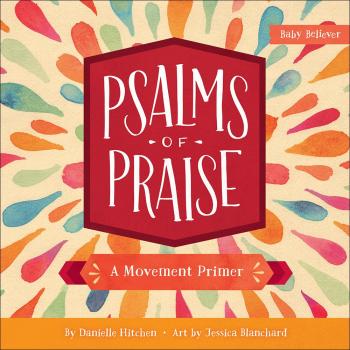
Psalms may not be "stories," but they can communicate many important ideas about God and people's relationship to him. Psalms of Praise takes a look at a few short verses from the book of Psalms, focusing on different postures -- a fun way to teach children how to relate to God, and also about different forms of movement, from walking, lying down, running, and even jumping over a wall! I've really enjoyed both titles I've read from this series of board books -- see my review for the "opposites primer" about the creation story here.
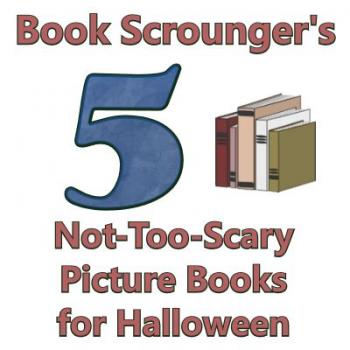
Halloween can be fun, but aspects of it can also be frightening for young children, or for older children who are more sensitive. These are a few books we've come across that cover Halloween without trying to be scary about it.
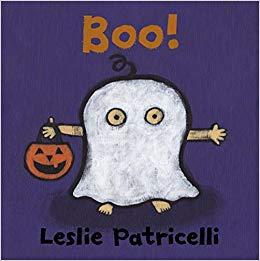
My children have really enjoyed the Leslie Patricelli board books featuring bright paintings of a bald, smiley toddler who introduces toddler-specific topics with few words. In Boo!, he enjoys October experiences such as picking out a pumpkin and deciding how to carve it, and picking out a costume and going trick-or-treating. At first he's a bit nervous about trick-or-treating in the dark, but once the candy comes out, he gets excited and decides he really does love Halloween.
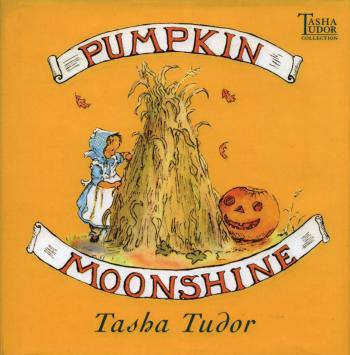
Featuring Tasha Tudor's gentle illustrations, Pumpkin Moonshine involves Sylvie Ann, a little girl in a pumpkin patch who finds the perfect pumpkin, until it decides to roll away down the hill and into the farmyard, causing a bit of mischief. But by the end, Sylvie Ann and her grandfather manage to corrall the pumpkin and carve it into a moonshine (which is apparently another name for a jack-o-lantern).
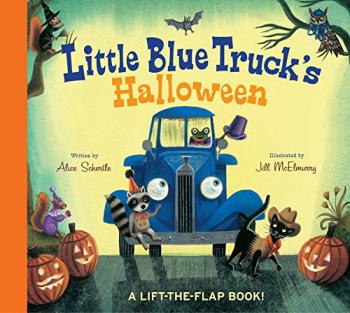
I don't always like books that turn into series, but while the seasonal Little Blue Truck books lack the narrative of the original, they are still fun and feature the same lovely illustrations. In Little Blue Truck's Halloween, we meet a bunch of dressed up farm animals, which young children can "unmask" by opening the sturdy flaps. At the end, even Little Blue Truck takes a turn!
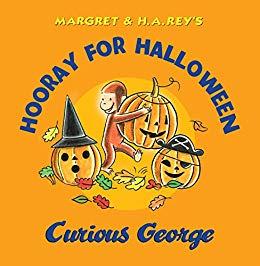
Curious George is a classic, and while this isn't my favorite of the bunch, Hooray for Halloween (previously published as Curious George Goes to a Costume Party) is still a fun story of George and the Man with the Yellow Hat attending a party that they didn't know was a costume party. Even though George ends up accidentally scaring the guests with his last-minute costume, it's not designed to scare any young readers.
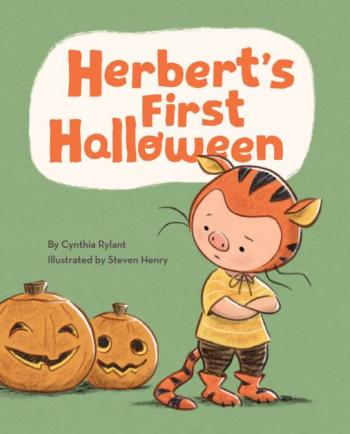
This is a good book for children who may be apprehensive about Halloween, or who simply like to hear about the traditions. Herbert's First Halloween, by Cynthia Rylant, introduces a pig named Herbert and his caring, involved father who gently walks him through the process of choosing a costume, and in the meantime helps to pique his interest by sharing some of his own childhood memories of Halloween.
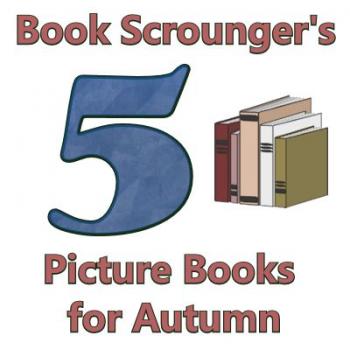
In New England, September and October are especially beautiful seasons -- it gets cooler (and sometimes quite cold) and the leaves turn gorgeous colors before falling. We enjoy apple-picking and harvesting pumpkins before the weather gets really cold. Here are some of our favorite picture books that involve the season of autumn (minus Halloween -- that will be a separate list).
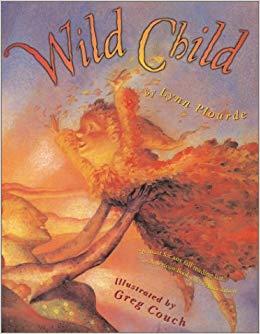
We really enjoy Wild Child, a book that celebrates the colors and features of autumn by personifying the season as a young girl who doesn't want to go to bed, while Mother Earth helps her with her various fall-like requests before she's finally able to slumber. See my full review here.
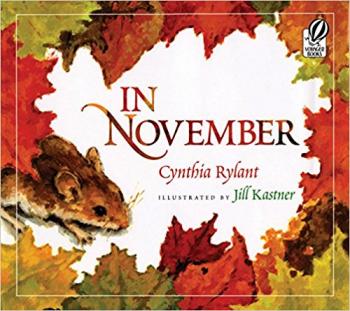
In November, by Cynthia Rylant, highlights changes in the world as November comes along. For me, November tends to be when autumn stops being fun, because the leaves are all brown and dead, and the air starts getting cold in earnest. But this is a nice reminder of all the things that are still going on in nature, and the warmth and joy to be found in human gatherings and food.
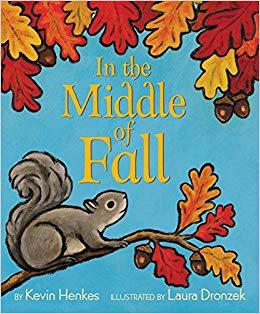
I love the vibrant colors and contrast of blue with the warmer autumn tones in In the Middle of Fall, by Kevin Henkes. This book observes and meditates on many of the different changes that take place in nature during autumn, and even encourages us to stop and pay attention to the little things due to the inevitability of time moving onward. Fun and lovely, but can also make you think.
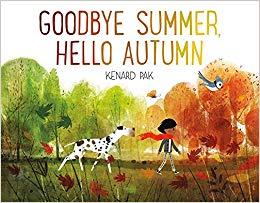
Goodbye Summer, Hello Autumn, by Kenard Pak, follows a girl as she walks through her neighborhood observing the changing of the season from summer to autumn. She asks simple questions of the things she sees, which may get a bit repetitive, but works nicely for young children, and includes beautiful fall colors in its illustrations.
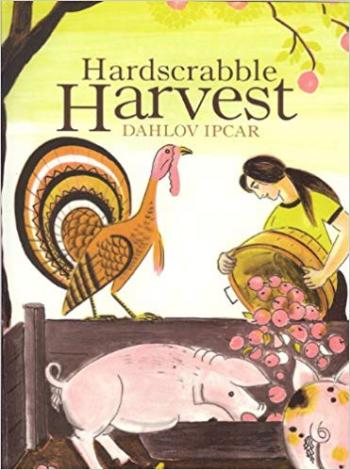
Hardscrabble Harvest, by Dahlov Ipcar, is probably not an easy book to find, but I really enjoy the rhyming text that celebrates the culmination of many months of work on a farm -- harvest. While the colors are very clearly "70s" in nature, they actually work quite well for fall. I appreciate that this book touches on some of the difficulties of farming rather than romanticizing it. Singer Priscilla Herdman even turned the text into a song, which can be viewed as a video here.

Whatever names you may have for them, based on tradition or heritage, grandparents are special. Here are some of my favorite picture books in which a child's relationship with one or both grandparents features prominently. For this list I decided to focus on living grandparents, rather than books that deal with loss -- but those are important too, and I plan on compiling a separate list later.
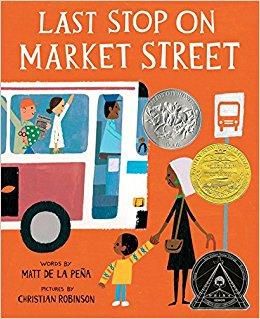
Last Stop on Market Street is a deceptively simple story about a boy named CJ and his Nana who are traveling by bus to volunteer at a soup kitchen. There are some eccentric-looking people on the bus, and they pass through a "dirtier" part of the city, but these things do not weigh down Nana's perception of the world. Instead, she and CJ make some connections with their fellow bus passengers, and CJ's Nana encourages him to take a higher view of life, no matter what they are doing. You can learn a lot from a Nana like this, without even realizing it.
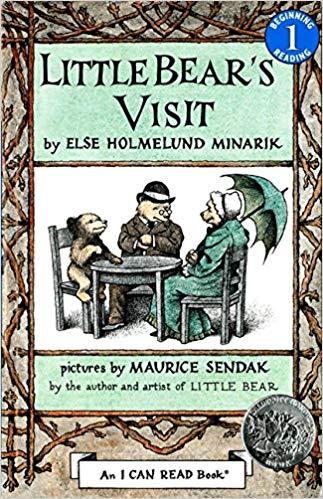
I grew up enjoying the Else Minarik classic (also illustrated by Maurice Sendak of Where the Wild Things Are fame) Little Bear's Friend, and so I also enjoyed the simplicity and charm of Little Bear's Visit, in which Little Bear goes to visit his grandparents for the day. It is not a busy day, but a day for exploring and spending time with his grandparents, as each one tells him a story -- his grandmother tells him the story of her pet robin and how she eventually let him go, and his grandfather tells the more fantastical tale of a goblin who is scared by a bump in an old cave and hears something coming after him (it's not as scary as it at first sounds). It's divided into short chapters for early readers, but my kids enjoy having it read aloud to them too.
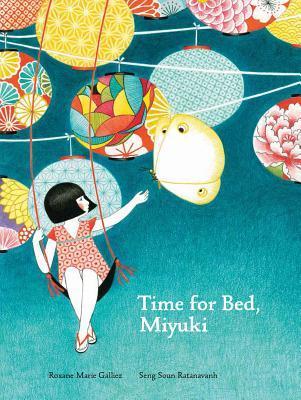
Time for Bed, Miyuki is a whimsical and fantastical story of a girl whose grandfather urges her to go to bed, but patiently puts up with the extraordinary things that she must get done before she is able to slumber. Very cool illustrations too, which tie in to Japanese culture. See my full review here.
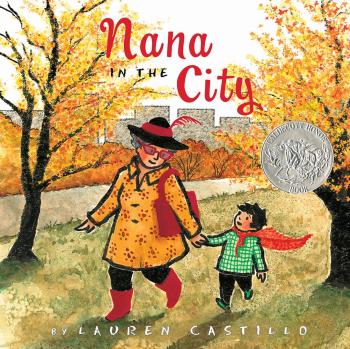
Nana in the City is about a boy who goes to visit his Nana in the city, and is at first nervous about how noisy and different it is, but soon comes to appreciate it more with his Nana's help. The plot is simple, but the relationship is sweet, and the illustrations are lovely and vibrant. The beautiful foliage colors also make this a wonderful book for autumn. See my full review here.
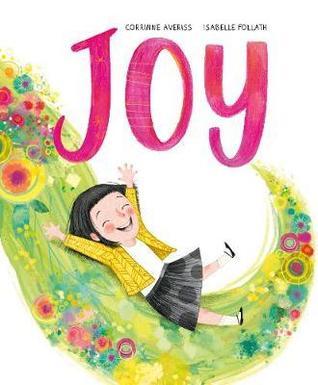
Joy is a very sweet book in which a girl named Fern tries to cheer her Nanna up, but finds it very difficult to capture joy with ordinary physical tools. Her child-like perspective is believable, and together she and her Nanna learn how to find pieces of joy even in the midst of difficulty, by helping each other. See my full reivew here.

Summer in literature is often seen as a time of adventure and exploration -- but it can also be a time to stop, relax, and enjoy nature. Regardless, here are some picture books we really enjoy, that seem to embody the spirit of summer.
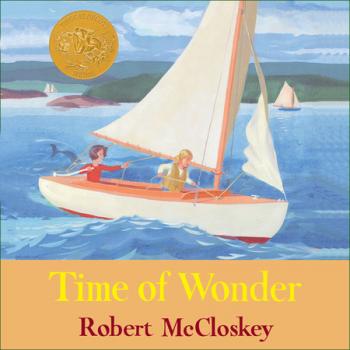
Time of Wonder is a classic McCloskey book (winner of the Caldecott Medal in 1958) that I read as a child, but I'm not sure I really came to appreciate it much until adulthood. The text is very evocative, and written from a second-person perspective, but it is also fairly wordy for a picture book, especially since it doesn't really tell much of a story until closer to the end. I think this might make it less accessible to some children, especially younger ones. However, both of my kids have seemed to enjoy it at various points, especially reading about the storm at the end, and how the people and creatures prepare for and clean up after it. By the end, the sadness at leaving that place and going back to school feels very real.
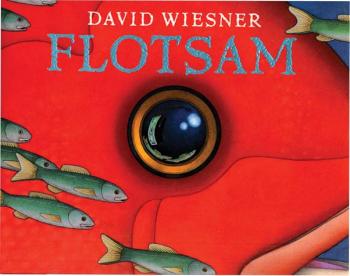
Flotsam is David Wiesner's fantasy story (winner of the Caldecott Medal in 2007) provides a secret view into what fish and other sea creatures are really up to down in the deep ocean, as discovered by a boy who finds a mysterious old camera that washes up on the beach. The story is told without any text at all, and while fairly simple, also manages to be absurd and mysterious, and the wordless nature of the book leaves some aspects and questions open to interpretation by the reader.
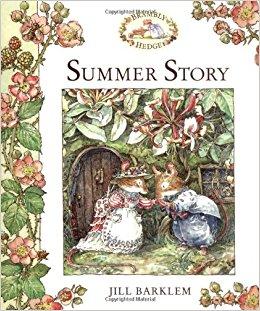
Probably not many Americans are familiar with Jill Barklem's Brambly Hedge series, but growing up in Britain, I was fortunate enough to have been introduced to it there and grew up with this sweet wedding story from the series. Summer is definitely "wedding season," yet I haven't found many picture books featuring weddings that aren't completely "about" them. This one covers the nuptials of Poppy and Dusty, two mice who decide to get married on a barge in the middle of a stream on a warm summer day. While it focuses on the wedding and preparations, the story doesn't get bogged down in the details, and leaves room for character development and lovely, detailed illustrations of the setting, including the mill (which Dusty oversees) and the intricate inner workings of the "dairy stump" (which Poppy oversees). It is really very evocative of summer in the British countryside, and as I've said before, no one seems to anthropomorphize rodents quite as well as the British.
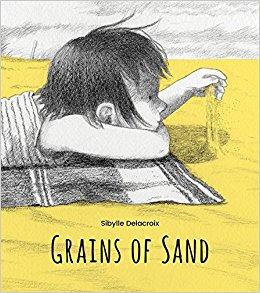
Grains of sand is a short and simple story of two children's summertime imaginings as they bring some sand home from the beach and wonder what would happen if they planted it. Nice illustrations as well -- see my full review here.
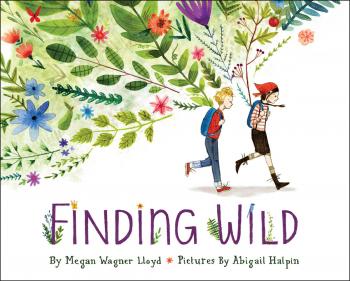
While Finding Wild is not necessarily about summer, it does embody the adventurous spirit that is so often a part of summer vacations and escapes. This book explores the concept of "wild" -- what is it, where is it, and how do you find it? Is it scary? Is it harmless? It may be harder to find in more populous areas, but it's still there -- if you look! See my full review here.

